Let’s get the obvious talking point out of the way: Pokémon Scarlet & Violet are divisive games. Generation IX has caught a lot of heat for its glitches and lack of polish, but despite that, I personally have still had fun with these games. So someone like me should love The Indigo Disk, right?
Let me explain: here at Destructoid, we’ve played hot potato with Pokémon review duties. CJ Andriessen and Eric Van Allen reviewed Pokémon Violet and Scarlet respectively, each arriving at the same “6/10” score. And later, the impeccable Chris Carter took the reins on the first DLC pack, The Teal Mask, who concluded that it wasn’t as good as The Legend of Zelda: A Link Between Worlds and also gave a 6/10.
We’re not necessarily bound to each other’s scores as an outlet, but sometimes things just line up that way. And for that reason, I really wanted to throw my own take in on Generation IX before we move on to whatever GameFreak has lined up next.
With The Indigo Disk, I expected to give these Pokémon games a day in the sun and maybe even give a slightly more generous score. After all, this second DLC clearly offers more than The Teal Mask did. There’s no way that The Indigo Disk could be worse than The Teal Mask, right?
Well, the good news is that, yes, The Indigo Disk absolutely is the superior DLC pack compared to The Teal Mask. It also fumbles in ways that wound up making me feel the most frustrated I’ve ever been with the Pokémon franchise to date. It turns out even I have my limits.
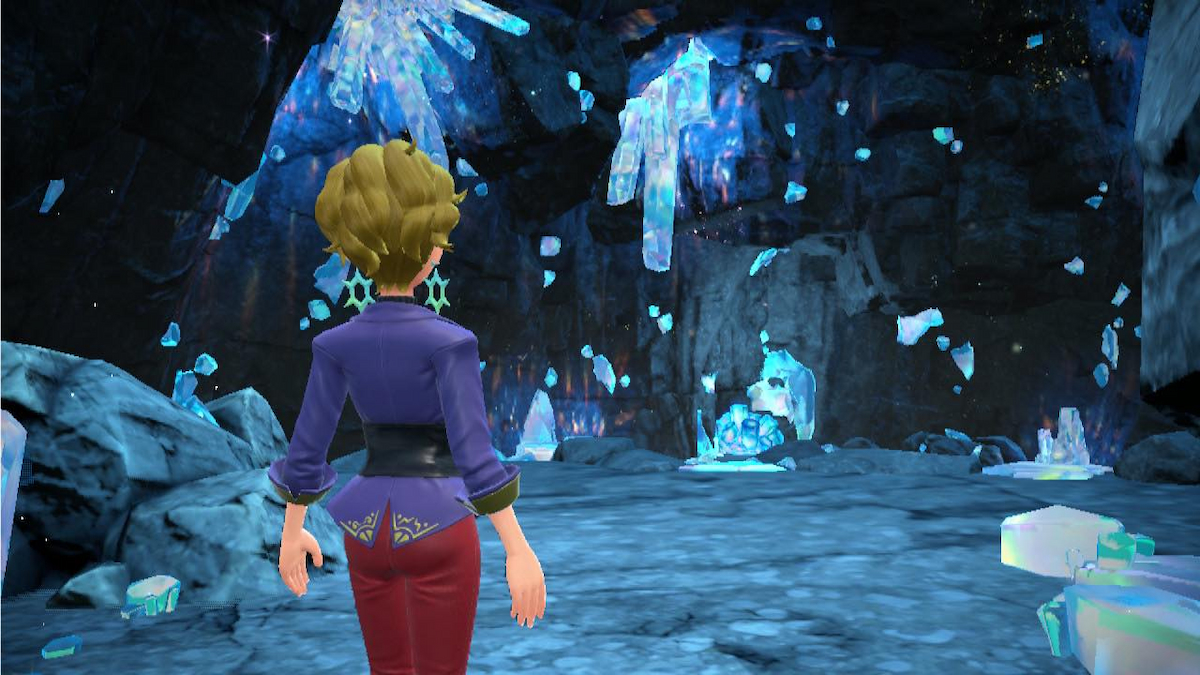
Pokémon Scarlet & Violet: The Indigo Disk (Nintendo Switch)
Developer: Game Freak
Publisher: Nintendo
Released: December 14, 2023
MSRP: $34.99 (Season Pass with Teal Mask and Indigo Disk)
Blue are the people here
As you might expect, The Indigo Disk continues the story threads introduced in The Teal Mask. As part of your dealings with the Blueberry Academy, you receive an invite to hang out at the school and do fun battle things since, you know, Pokémon. But there’s one small problem: Carmine and Kieran have returned, and the latter still feels super upset about that time he realized you’re the protagonist in a Pokémon game. And thus begins your quest to battle some new trainers, figure out how to help Kieran deal with his teen angst, and even dip back into Area Zero to uncover a hidden treasure.
That’s right, remember how this DLC bundle is called The Hidden Treasure of Area Zero? The Indigo Disk is where we finally get some follow through on what that means. If you’re worried that I’ll get upset about how Area Zero was handled later in this review, you should be!
Anyway, the story is honestly just window dressing for The Blueberry Academy itself. It turns out this school is on an island that has an underwater terrarium filled with volcanoes and it’s beautiful. Sorry, Terarium, because, you know, Terastallization. And this, really, is the star of the show. The Terarium is a new open world with distinct biomes, and this is where you’ll see most of what The Indigo Disk offers. Because not only does it contain a plethora of new Pokémon to catch, but some harder trainer battles as well.
Prepare for trouble, and make it double
Early in The Indigo Disk, you’ll learn that Blueberry Academy is full of hardcore trainers who prefer double battles. Seeing as how Pokémon’s officially sanctioned competitive scene focuses on double battles, I enjoyed seeing the main game prioritize this format.
The Indigo Disk does a good job pitting you against common strategies in high-level play. For example, more than a few trainers will incorporate support Pokémon into their teams, using stat boosting moves or throwing in a Protect to block your incoming damage. Additionally, enemy trainers aren’t afraid to equip impactful held items on their Pokémon. Think you can just nuke every enemy you see with glass cannons like usual? Not if your opponent’s Focus Sash has anything to say about it.
At its best, The Indigo Disk does a respectable job of adding some bite to Pokémon’s typically tepid difficulty. Double battles prevent you from getting those free monster swaps in between KO’s, and the strongest trainers actually come at you with full teams of six. I went into this DLC with my story team of max level but otherwise unoptimized Pokémon, and at least one battle in here surprisingly came down to the wire since I wasn’t taking the content terribly seriously. It was a nice feeling to have for once, especially since the enemy team was only in the level 75-80 range.
That unfortunately leads us to a bit of an issue in this DLC: the level range.
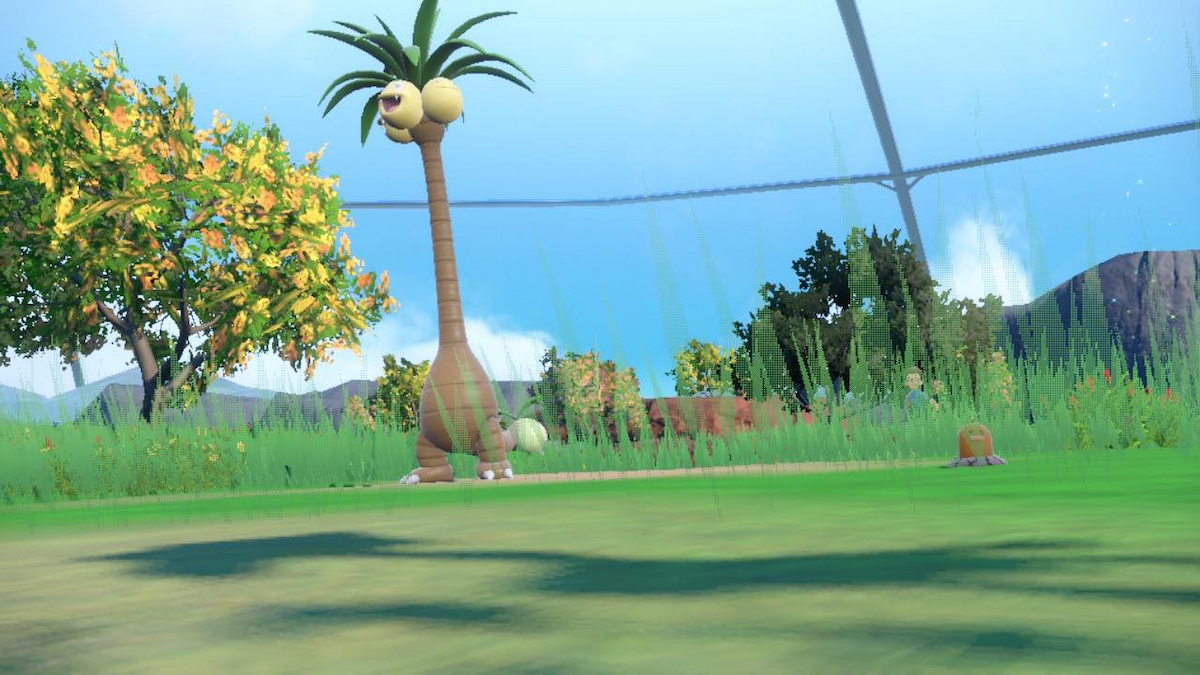
Level the playing field
As our own Chris “Master Trainer” Carter mentioned in his review of The Teal Mask, Pokémon DLC has a leveling issue. And while The Indigo Disk fares better than its predecessor here, it suffers from the same problem. Wild Pokémon are level 60ish, boss battles are level 70ish, and the postgame breaks into level 80ish content.
Unfortunately, the dedicated Pokémon fanbase most interested in DLC most likely has a max level team already. And while battles against the Elite Four fare decently, that’s only a single digit number of battles that stand out. I can understand balancing the DLC in a way that’s accessible to people who didn’t do any postgame grinding. But ideally, the DLC should offer ways to please both crowds.
I have seen some suggest that players should start their teams over if they want the DLC to be challenging. And sure, the idea of catching and raising the new Pokémon to enjoy the content sounds good on paper. The problem is that the difficulty doesn’t escalate in a way conducive to this playstyle. It starts at a high level and doesn’t do much to climb higher than when you entered it. So despite seeing 100+ “new” Pokémon return to Scarlet & Violet, there’s little motivation to use them. I mean, if you catch a Pokémon that already knows all its critical moves and can evolve in one level, is there any joy in raising it?
It’s awkward for sure, but I’d forgive this if there was a cool endgame to enjoy. And here’s where things go off the rails.
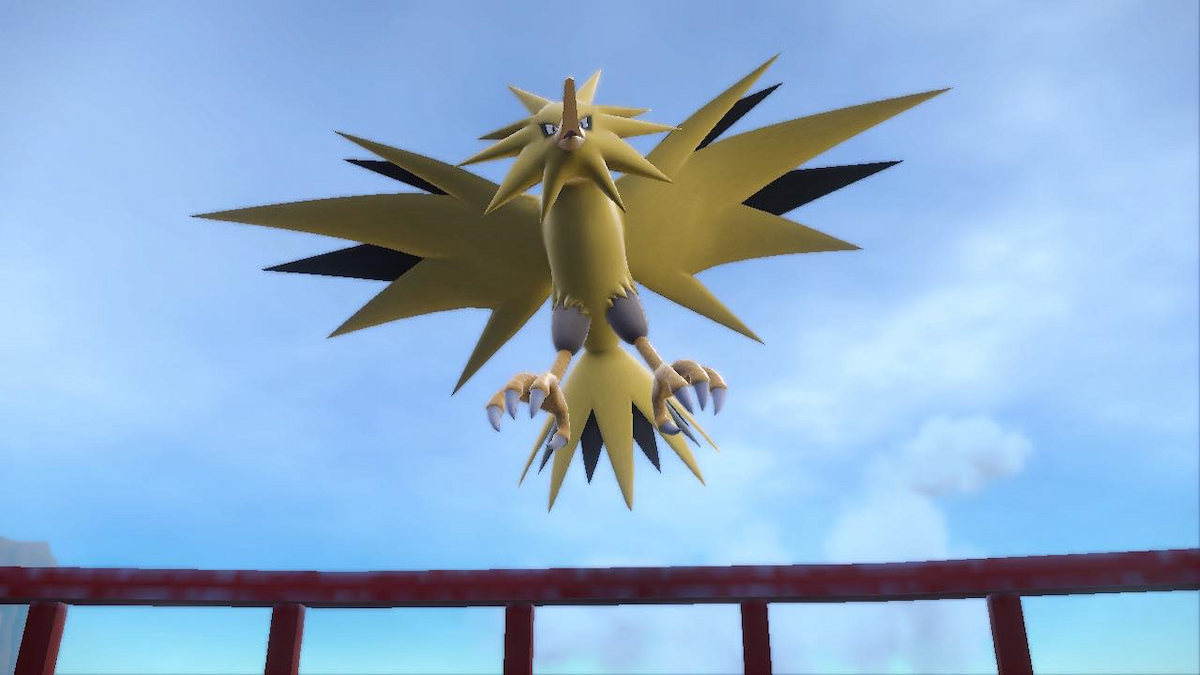
Throw out the BBQ
So in theory, The Indigo Disk adds several cool features to Scarlet & Violet. These include encounters with legendary Pokémon, extra scenes with Paldea’s gym leaders, and even the ability to catch starter Pokémon from past generations. However, unlocking those features involves engaging with the new Blueberry Quests, or BBQs for short. The Blueberry Quest system is essentially like an offline Battle Pass that gives you a currency called BP, which you use to access those stated cool features.
Now, what makes Blueberry Quests tricky to complete is that they’re… bad. I can’t even sugar coat it, they just suck.
Despite the endless quest potential inherent to an open world Pokémon game, Blueberry Quests largely consist of aimlessly walking around, taking pictures of Pokémon, catching a Pokémon of a certain type, and making TMs and sandwiches. One might think these quests will escalate in complexity as you go, but… nope. It is seriously just a rotation of generic open-world busywork that starts repeating almost immediately. And once again, this system is where The Indigo Disk puts all its cards.
Look, I like grindy games here and there. I mean, I play Pokémon, it’d be weird if I didn’t. But this is so obviously and transparently filler content that I can’t call it anything else. I mean, it takes literal hours just to make a dent in unlocking all the stuff The Indigo Disk offers. I can understand spacing your critical unlocks out, but there is a sickening lack of imagination in the quest variety. Let’s not forget that Pokémon Legends Arceus – while imperfect – had far superior quests and optional tasks to pursue. And that game’s about two years old now!
It’d be one thing if Blueberry Quests were their own supplemental system. I’d maybe chase them down here and there if it was just another way to grind for stuff. But any enthusiasm I had for engaging with The Indigo Disk beyond its core story was quickly killed once I saw these quests.
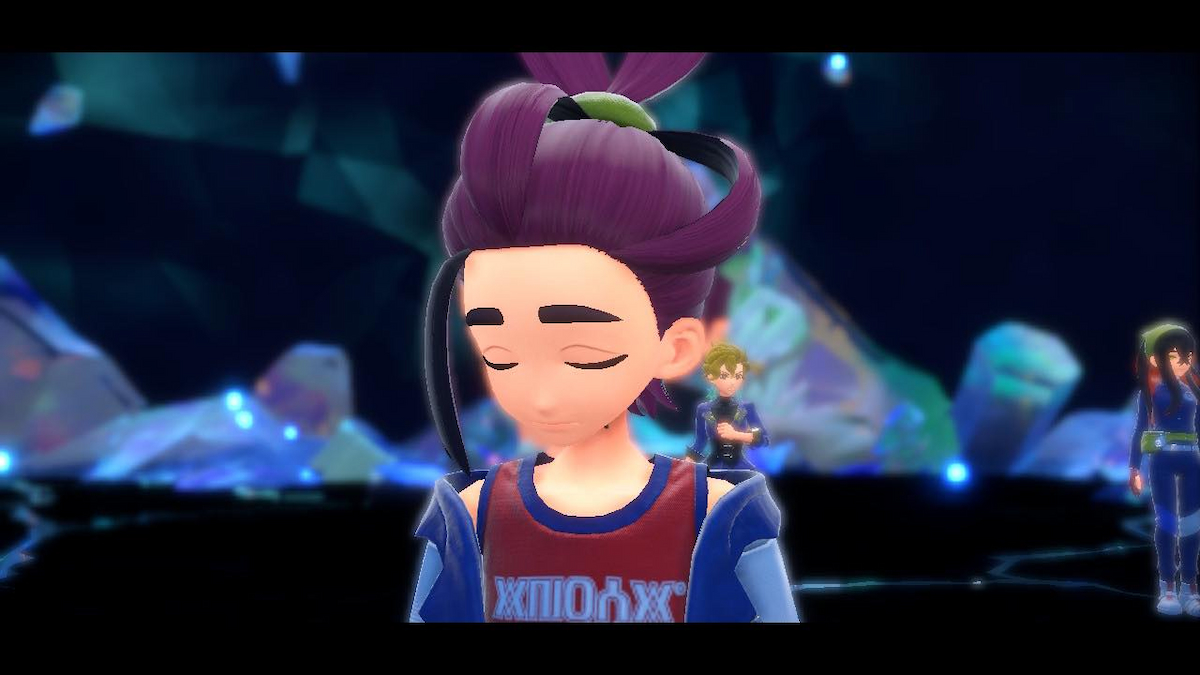
Oh yeah, Area Zero
And as far as that core story goes, it… exists. I’m not going to pretend like I expect literary excellence from a Pokémon game. That said, Scarlet & Violet tried this weird thing where it presented generally likable and endearing characters. Nemona, Penny, and especially Arven turned into a great party of friends, and seeing how the final story arc of the base game unfolded made me really want to see more of this world and cast.
So you can understand how disappointed I feel that both DLC packs have little to do with the core games.
The Indigo Disk primarily continues the narrative surrounding Carmine and Kieran introduced in The Teal Mask, and I just… don’t care about it. I don’t hate this brother and sister duo as much as some did, but the writing here is utterly plain. It doesn’t meaningfully explore the topics it touches on, and you can guess how it’ll end from a mile away. It’s fine by Pokémon standards, but it’s a bummer to go from genuinely interesting concepts to banal business-as-usual.
Even worse is that Area Zero – the namesake location for the DLC – winds up feeling like an afterthought. Area Zero was the most memorable thing about this generation, and I really looked forward to learning more about Pokémon’s spooky abyss. But long story short, Paldea’s crater merely puts a cap on the siblings’ story and abruptly reveals a final boss. Area Zero was arguably the high point of the entire game, yet it’s just a place in The Indigo Disk. What an utterly disappointing way to send off one of the most unique narrative risks the Pokémon franchise has ever taken.
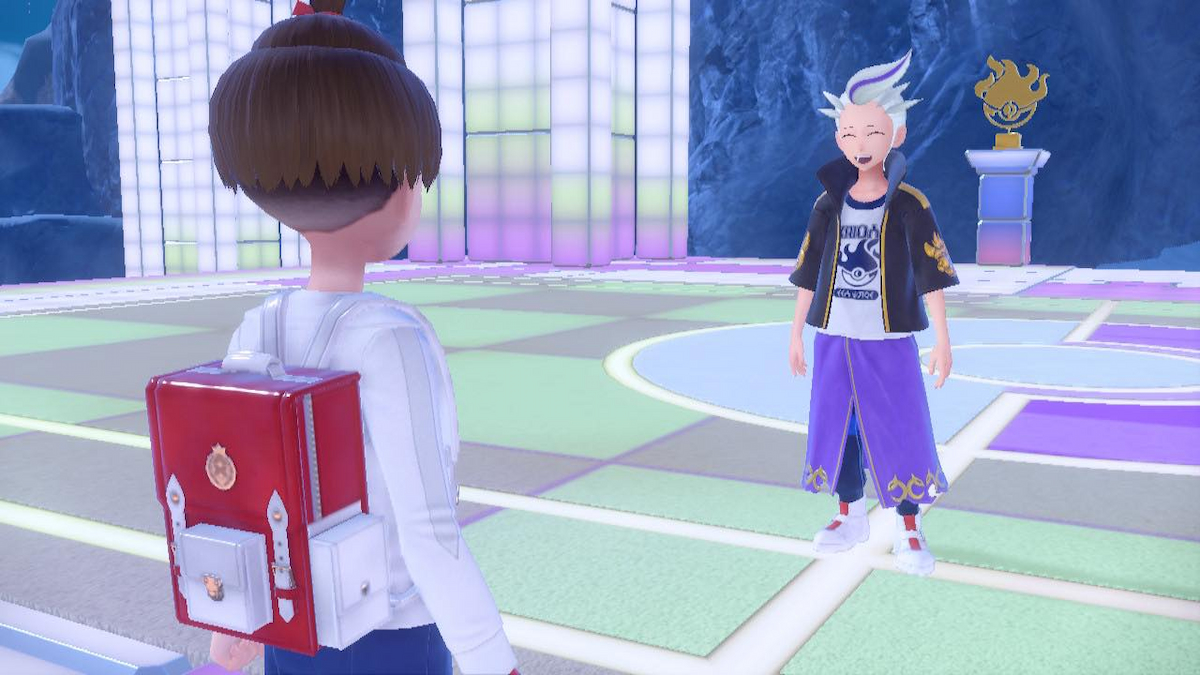
Missed opportunities
Generally speaking, it’s a faux pas to judge a game based on what it isn’t versus what it is. But The Indigo Disk feels so padded that I can’t help but think of what could have been. The tipping point for me was before one of the Elite Four battles, in which you’re tasked with training a new team of Pokémon to fight three trainers before the big boss battle. A fine enough gimmick, but the task giver in question says, and I quote:
“I know, I’m asking a lot. But what fun would it be if you just dipped into your vault of beefy Pokémon and cheesed your way through?”
Yes, wouldn’t that be a tragedy? I’d be a shame if players spent a year engaging with an onslaught of super hard raids and limited-time content only to find they’re wildly over-leveled now. I appreciate the self-awareness, but who says Pokémon DLC must be set up like this?
Pokémon has such a rich foundation that could be taken in so many different directions. What’s more, there’s clearly a market hungry for that. Take one look at YouTube, and you’ll find challenge runs of classic Pokémon games with millions of views. Fans are eager for creative ways to play Pokémon. So why does the official DLC offer “take a picture of a swimming Pokémon?”
There are so many possibilities to explore with Pokémon, yet The Indigo Disk does precious little to get creative. Imagine if the two DLC packs were combined into one standalone adventure that was balanced around training and leveling the new Pokémon? Or what if the DLC centered around a roguelike experience where you never knew which Pokémon you’d use each run? I’m not saying those are good ideas, but they are ideas. I’d rather see a swing and a miss than the busywork we have now.
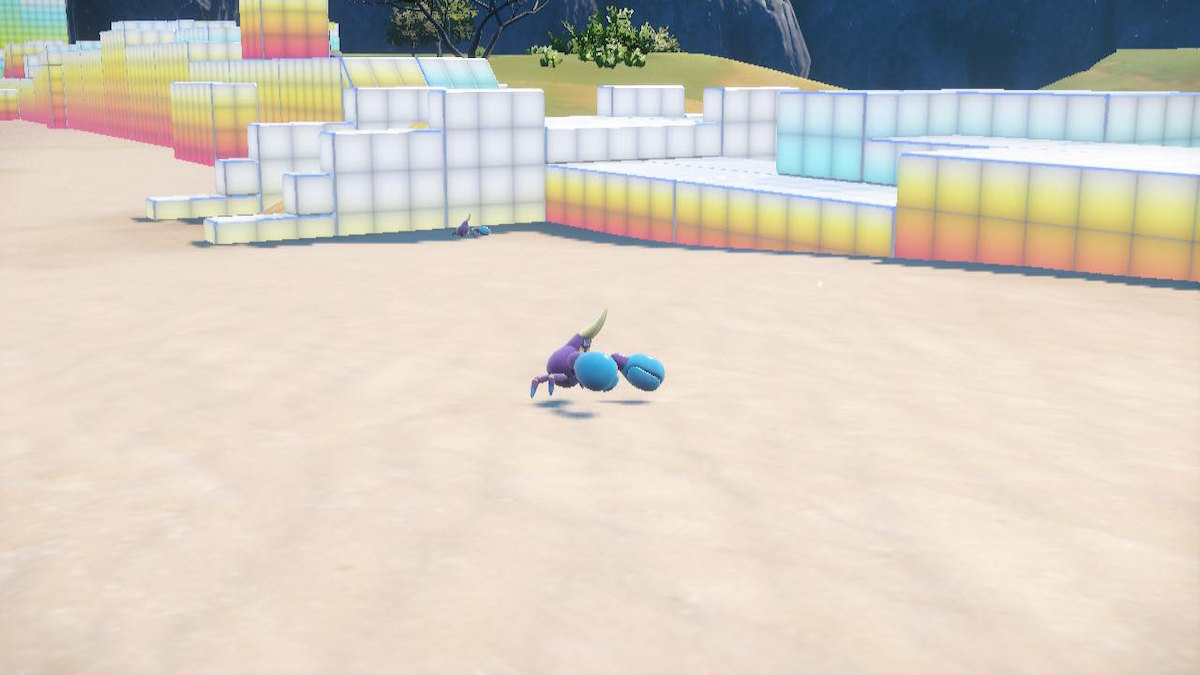
It’s more Pokemon
I’d understand if, by this point, you think I completely hate The Indigo Disk. But despite all these misgivings, I did have some fun with this DLC. Exploring the new Terarium and catching Pokémon put a smile on my face, and those battles where everything really clicked were fun to play. I do still think Scarlet & Violet are enjoyable, and neither DLC pack necessarily changes that. Heck, if I was feeling generous, I’d say the focus on double battles here is a step in the right direction.
However, at this point, I’m so tired of seeing Pokémon “take a step in the right direction”. As a reminder, this is the highest grossing multimedia franchise in the entire world. Yet this is at least the second generation in a row that’s left me hoping the team will get it right next time. As it is, Pokémon Legends Arceus was a huge “step in the right direction,” but Scarlet & Violet learned precious little from it. DLC like The Indigo Disk could have rounded out the base games in areas they originally lacked in. Instead, it’s just more. An influx of sheer content, as if we’ll forget Pokémon even exists if we don’t have something shoved in front of our faces every year.
In the past, all this stuff might have bothered me less. But Pokémon’s longevity has made it one of the main ways I can connect with my younger family members. Seeing even them wonder why Scarlet & Violet perform like they’re hanging by a thread on the Switch over a year later is inexcusable to me. And with how much The Indigo Disk tees up a Generation V remake, I’m honestly dreading how hard Unova will get butchered at this rate. I’d love to be proven wrong, but at this point, I’m not really counting on it
The Indigo Disk is more Pokémon Scarlet & Violet, for better or for worse. If you’re still deep into Generation IX, you’ll at least get mileage out of exploring the new areas and seeing the new Pokémon and TMs. But beyond that, The Indigo Disk neither offers a compelling challenge for longtime fans nor a chill grind for more casual fans. Players can at least take solace in that this second half of the DLC is generally better than the first. But for those frustrated by the rushed yearly cycle of Pokémon games, The Indigo Disk will only reaffirm your misgivings.













Published: Dec 19, 2023 02:00 pm